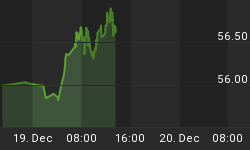I love getting emails from those who read my blogs because I keep getting well thought out comments and/or questions from readers. Yesterday was a particular treat for me, as my good friend and fellow blogger (Steve Moyer) at SafeHaven and The Market Oracle sent in some comments regarding my pet topic (Critical Mass).
Critical Mass: In the world of real estate, I've coined the phrase Critical Mass. It represents a time or state in the future when the number of Americans upside down on their home is so large that it psychologically changes the way the masses look at real estate. A time when continuing lower real estate values cause a heightened level of fear, and letting a house go back to the bank (The Walk Away) becomes a statistical norm, which could overwhelm the banking industry and compress real estate values well below what many could have ever imagined. Thus making Critical Mass a key component of the deflationary cycle.
Steve was responding specifically to my latest blogs on Critical Mass:
Here's what Steve had to say:
I'm following your critical mass posts with interest.
NO ONE seems to be talking about the fact we could have a bond crisis that pushes interest rates up to 18-20% (inevitable in my view).
That 20% decline in housing prices would become another 50% decline.
I am pretty certain this is the way this is going to play out.
Everyone is projecting forward super-low interest rates in perpetuity. That's a very dangerous thing to assume with all the money-printing going on.
Best regards,
Steve Moyer
I enjoy talking money and financial trends with Steve, he's an immensely sharp guy. If you ever get the chance to do so, it's a real treat and well worth your time.
I couldn't agree more with Steve's comments. It's really a matter of when we get the melt down or collapse in the US bond market sending yields higher, thereby forcing a spike in mortgage rates to levels no one today is ready for. I've written in the past that this event could happen at the very same time the government moves federal tax rates higher.
Yes, we could have the ultimate double whammy in the future of much higher mortgage rates and significantly higher federal tax rates, which will put immense downward pressure on real estate values. Events that are not priced into real estate today!
One thing about large (secular or post bubble) corrections in price that is never understood until it's too late is the following: Pundits talk about price reversion downward to a mean as if that will hold because we've reached a statistical norm that everyone can get comfortable with as a bottom and then we can get on with life as if it were that easy.
If that were the case there would be little volatility in the price of any asset. They lose sight of large corrections going well past a statistical mean due to rampant fear and changing conditions. They can't get their head around that impact on the future.
Critical Mass in essence captures that very point in time when changing dynamics (higher interest rates, taxes, foreclosures, or unemployment) pressures prices lower to a state when a large mass of the population is upside down on their homes. Then fear kicks into high gear, pushing prices well below any standard mean. It's at that time when the new American way of letting a house go back to the bank becomes more of a statistical norm. This is when values correct well past what anyone could have ever imagined in a deflationary cycle.
The part of the process that I feel gets little discussion publicly is how close we are to a tipping point in real estate, at least conceptually. While it may take years to get to those extremely high mortgages rates and taxes, it shouldn't take much pressure from higher interest rates, higher local taxes and fees, the current bulge in foreclosures, or unemployment to exacerbate real estate price declines in the near future. If so, then it's just how the public handles the fear aspect as we approach Critical Mass!
Whether its higher rates and taxes, higher unemployment, or the absolute volume of shadow inventories/foreclosures, or more likely a little combination of those factors, we are very close to creating the decline in real estate values over the next 12-24 months that gets us to a state of Critical Mass.
At Critical Mass, the tipping point may throw real estate into a water fall event in prices. Prices do not collapse from a peak, but rather after a prolonged correction has squeezed every ounce of confidence out of the market and fear takes control of the public and they collectively throw in the towel.
I want to thank my good friend Steve for his comments; it's always a treat for me to talk money and trends with him. I think it's my turn to buy him lunch!
Hope all is well.















